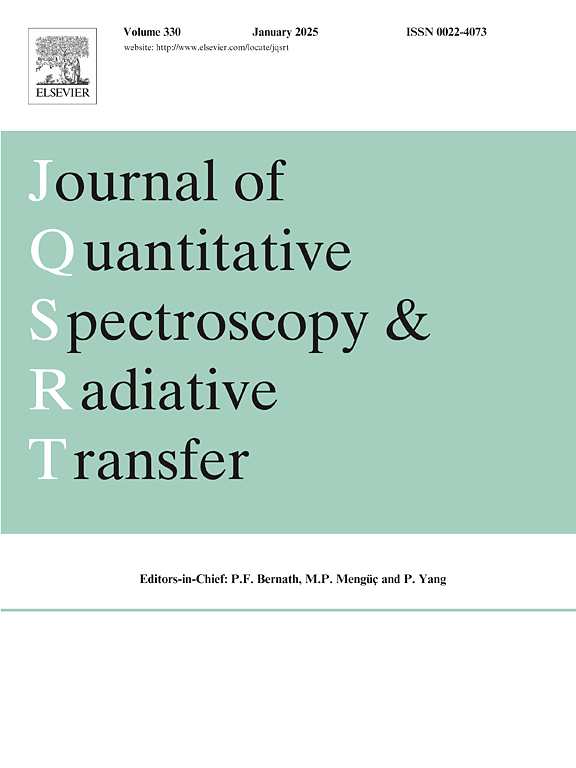Exploring the impact of rainfall intensity on the attenuation-rainfall relationship
IF 2.3
3区 物理与天体物理
Q2 OPTICS
Journal of Quantitative Spectroscopy & Radiative Transfer
Pub Date : 2025-01-15
DOI:10.1016/j.jqsrt.2025.109364
引用次数: 0
Abstract
The attenuation of electromagnetic waves due to rainfall is a critical factor in radar and telecommunication systems, particularly in frequency bands above 10 GHz, which is increasingly utilised for data transfer. This study addresses the gaps in understanding how these attenuation effects vary across different rainfall intensities and Drop Size Distributions (DSD). By analytically investigating the irregularities in the cross-sections of raindrops within the 1 to 30 GHz frequency range, the study mentions significant peaks in attenuation at frequencies below 10 GHz, which are more pronounced as DSD changes with rainfall intensity. Using the extinction and efficiency cross-sections of raindrops in 1–30 GHz microwave transmission, the coefficients of rainfall-attenuation correlation were derived for each sector of rainfall intensity of 1–300 mm/hr. Building on these findings, we propose an enhanced rainfall-attenuation relationship, incorporating dynamic coefficients, varying with both factors, DSD and rainfall intensity. Unlike previous models that only suggest calibration of the attenuation-rainfall relationship with DSD, our results indicate that the coefficients should also dynamically adjust based on rainfall intensity. We further demonstrate how these varying coefficients differ from the ITU's recommendations, providing detailed graphical comparisons. This advancement allows for more accurate calculations of rainfall intensity, improving the precision of telecommunication and radar systems in diverse weather conditions.
求助全文
约1分钟内获得全文
求助全文
来源期刊
CiteScore
5.30
自引率
21.70%
发文量
273
审稿时长
58 days
期刊介绍:
Papers with the following subject areas are suitable for publication in the Journal of Quantitative Spectroscopy and Radiative Transfer:
- Theoretical and experimental aspects of the spectra of atoms, molecules, ions, and plasmas.
- Spectral lineshape studies including models and computational algorithms.
- Atmospheric spectroscopy.
- Theoretical and experimental aspects of light scattering.
- Application of light scattering in particle characterization and remote sensing.
- Application of light scattering in biological sciences and medicine.
- Radiative transfer in absorbing, emitting, and scattering media.
- Radiative transfer in stochastic media.

 求助内容:
求助内容: 应助结果提醒方式:
应助结果提醒方式:


